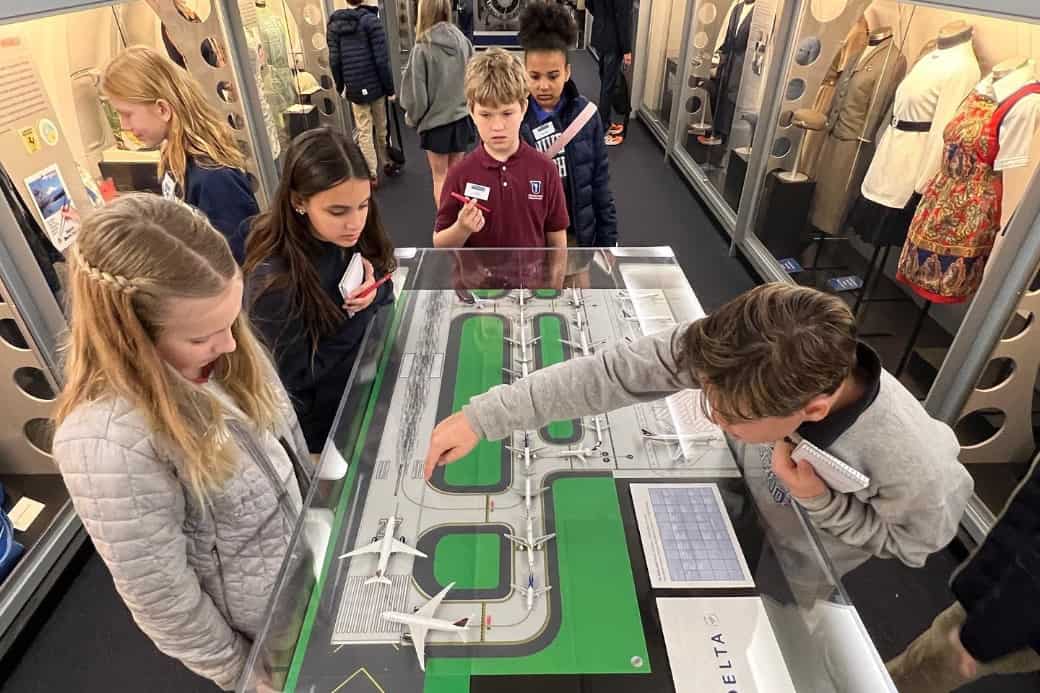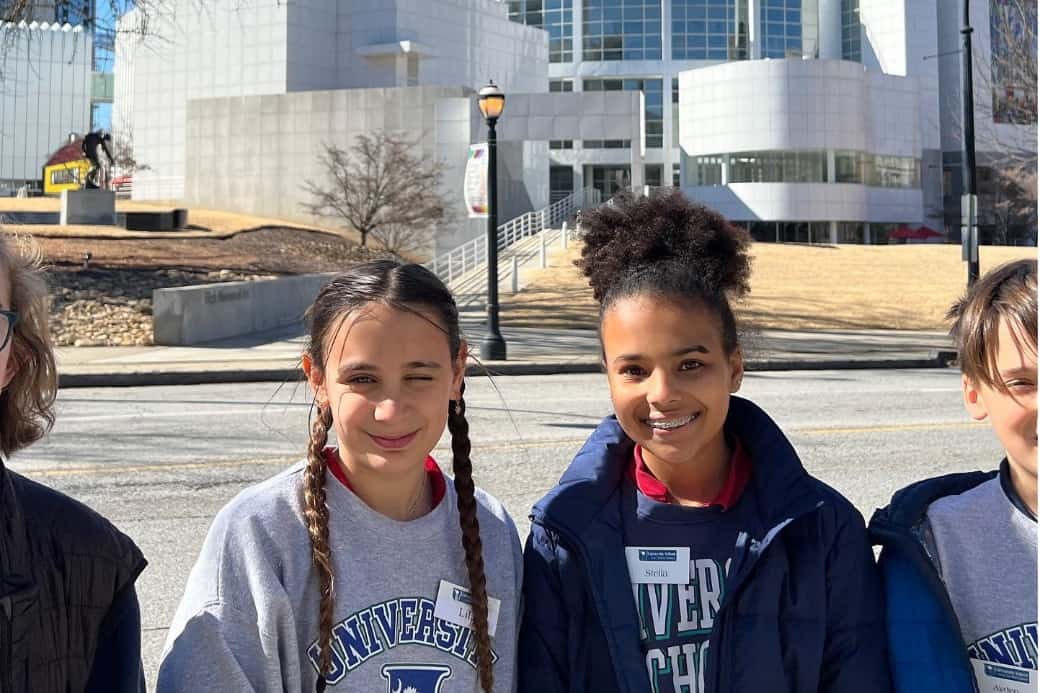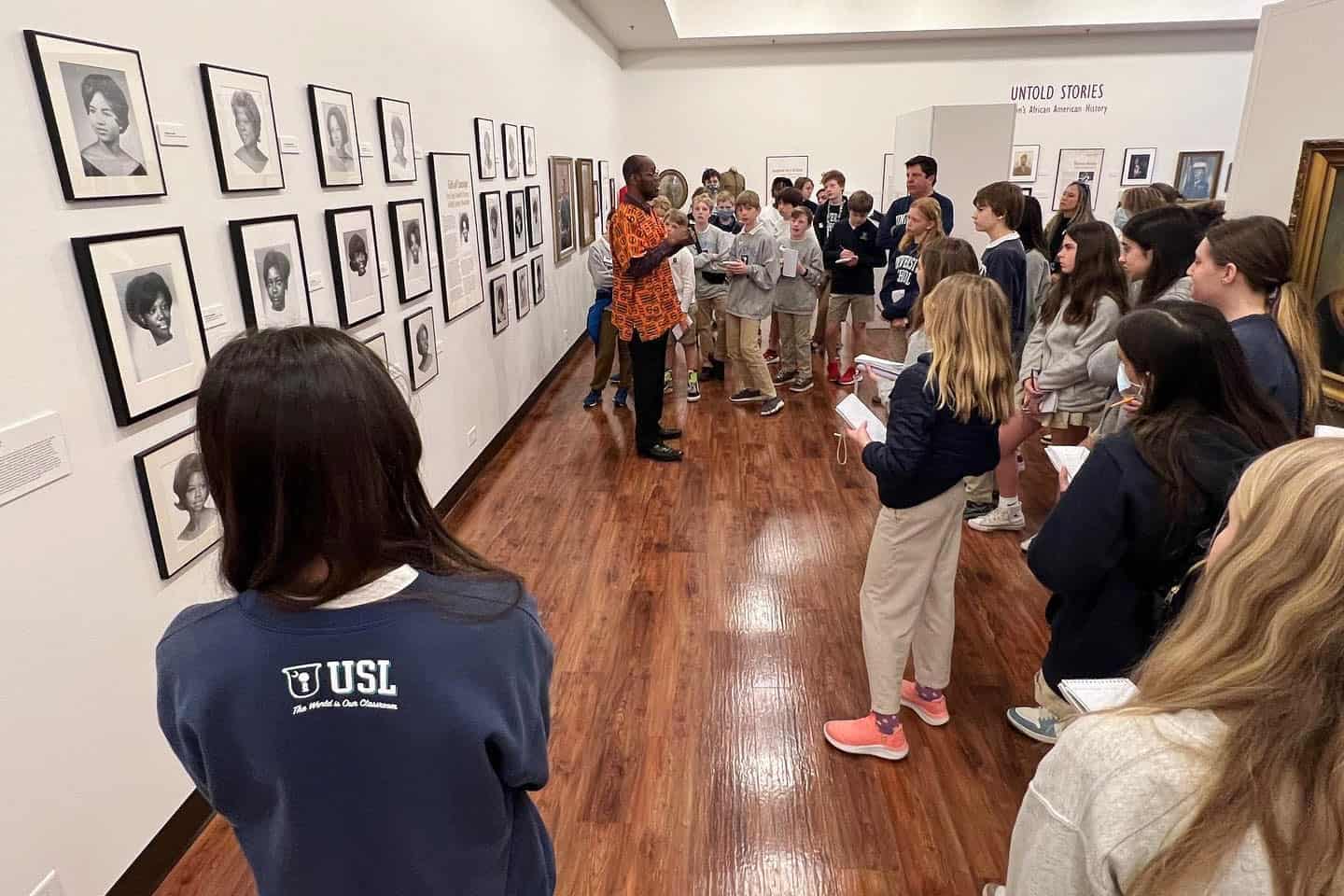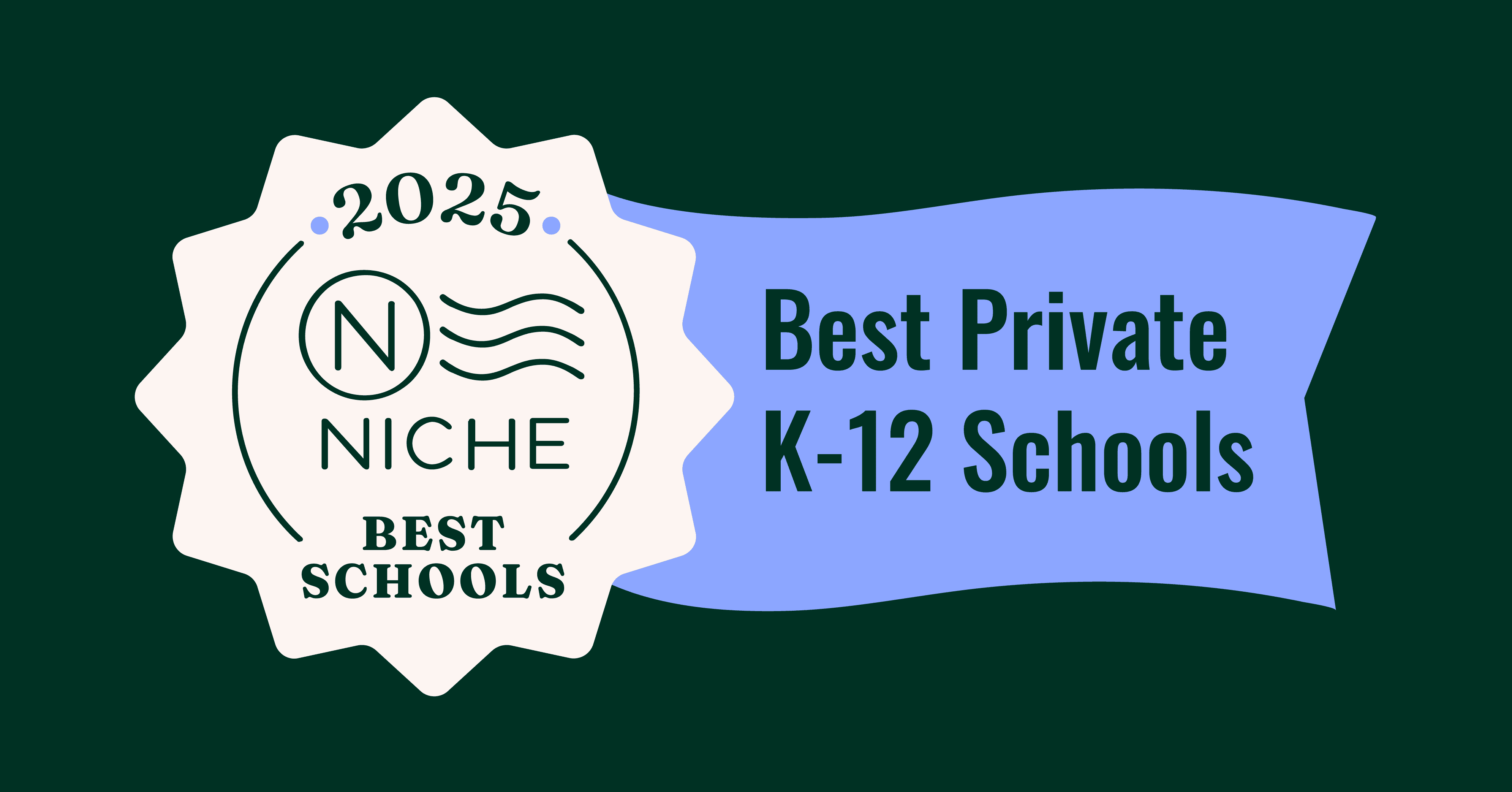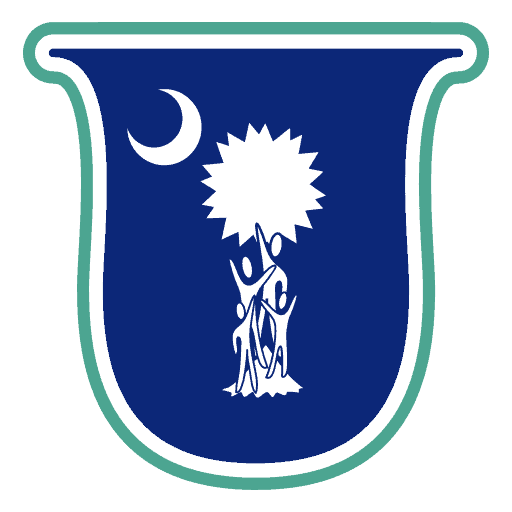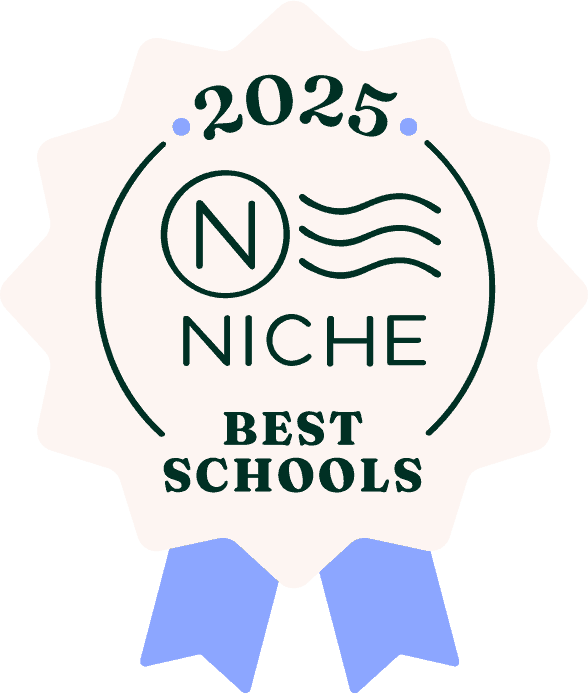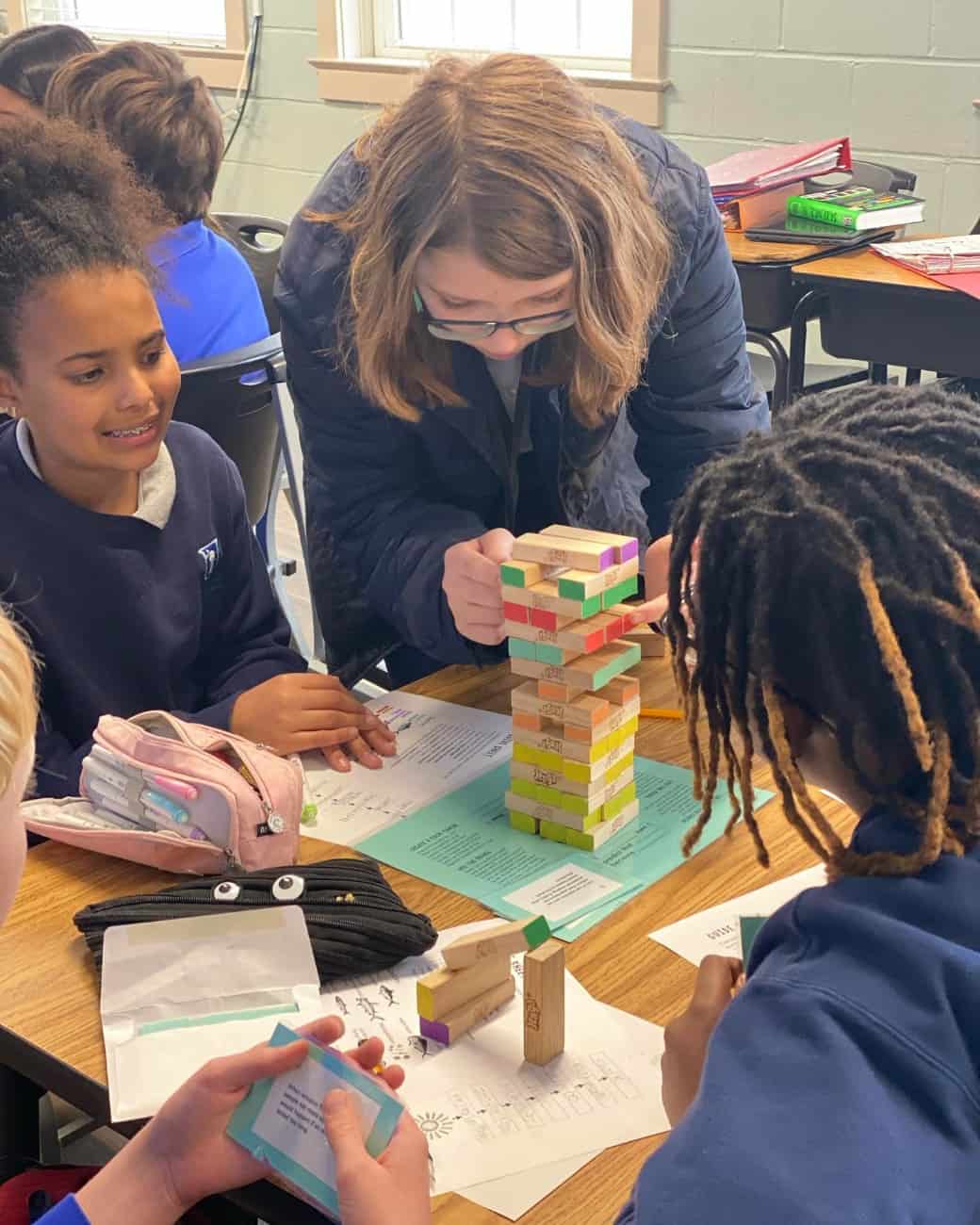
Developing Citizen Leaders for Our Futures
In grades 6-8, our students are stepping into their growth as students, community members, and engaged citizens. Our unique approach encourages young adolescents to engage with curiosity while taking on the increasing responsibility of who they are becoming in the world beyond the classroom.
Middle School is designed especially for young adolescents’ needs.
Programs and activities at the Middle school level are active, interesting, and challenging to keep students engaged. Our middle school students are actively involved in their community and develop responsibility for their own education. Although adolescence can be a turbulent time, it should also be a time for exposure to many new pursuits, active learning, experimentation in a safe environment, and personal growth. Curiosity, reflection, inquiry, and problem-solving are crucial to fostering interest in education at this time in a student’s life when so many other things are happening physically, socially, and emotionally.
Middle School Trip
Integrated into each year is a Middle School trip of 5-7 days. All students take part, and each year’s trip is distinct. We have been to Alabama, Gulf Coast states, Pennsylvania, Georgia, Florida, Eastern Tennessee & Western North Carolina, Washington, D.C., and New Orleans. This allows students to see different regions and participate in experiences across the disciplines. They share their insights with everyone upon their return — adding this information to our collective knowledge of the world. We also include visits to one to two colleges, enabling students to begin to see and contemplate all the different types and sizes of schools in our country.
USL has exceeded our expectations. The leadership and faculty are exceptional. They balance high academic expectations, kindness, giving, and thought-provoking community experiences. Mentorship between students within their own community is a wonderful aspect of the school. It is important to us for our children to learn to form individual thoughts and engaging questions. Our child learns this at USL. They offer engaging activities outside of school for social interaction and a wide range of after-school activities.
– Middle School Parent
Curriculum
Humanities is an integrated History and Language Arts course. It focuses on skills: writing, reading, speaking and listening. Students are asked to read for both enjoyment and content. Novels, short stories, plays, essays, poetry, and other primary sources are encountered regularly. A heavy emphasis is placed on improving writing, specifically drafting, rewriting, revising, editing, and polishing the final product. Our students are taught to write for a wide variety of purposes. Individual projects, classroom discussions, and oral presentations are common requirements. As students mature within the program, our expectations for in-depth thinking and high-quality work increase. There is also a strong arts component, and this includes creating works that are found in the period of study. In Middle School, historical topics are taught over a three-year cycle that rotates through US History, Modern European History, and World History. All students study history, world geography and cultures, and contemporary world issues. Humanities classes are presented in an interactive environment focusing on debate, simulations, oral history, research, and projects.
Global Languages classes are designed to expose students to the discipline of studying a global language while also emphasizing an appreciation of different cultures. Each University School student studies Spanish, Latin, and Mandarin or an equivalent exotic language. University School strives to accommodate additional language interests of each student. University School is the only school in the state where students can simultaneously receive high-level instruction in three languages. In the Middle School, the Spanish program is structured so that each student will complete, as a minimum, high school-level Spanish I upon graduating 8th grade from University School. Students are grouped by ability, and the standard grade progression is as follows: 6th Grade (Spanish I-A), 7th Grade (Spanish I-B), 8th Grade (Spanish II or Introductory Topics in Spanish II). The same pattern is followed in Latin. Therefore, an eighth grader will graduate from USL with one or two high school credits in Spanish and Latin — for 2 to 4 total credits. Because of the school’s commitment to field learning, traditional classes only meet four days per week or 80% of the traditional seat time. They also incorporate enhancements like field trips, projects, and opportunities to engage with native/proficient language speakers. By definition and design, these courses are Honors level.
Leadership & Life Skills is a class for all students that integrates the lessons in the other disciplines together for the students. We regularly watch and discuss CNN Student News, and lessons in geography and history emanate from the “issues of the day” that emerge with each passing day. Guest speakers, student job shadow days, and field experiences (Learning Outside the Classroom) originate in L&L Skills in collaboration with the teachers in the other disciplines, and students regularly create and share reflections about what they have learned. Students also take ownership of their Leadership Skill Wheel that USL uses to evaluate students each quarter (in addition to grades and narrative comments), including averaging and sorting their numbers in each discipline and planning a strategy to improve them.
Mathematics includes the latest understanding of best practices advanced by the National Council of Teachers of Mathematics (NCTM). For grade 6 math and beyond, University School uses several approaches to help each student fulfill their potential. The Math program is individualized for each student, allowing proficient students to thrive and advance and master material at an accelerated pace. Students have the opportunity to gain high school credit by taking Algebra, Geometry, and Algebra II. This means that Intermediate School students (grades 3-5) can begin Middle School work upon completing the grade 5 standards, and Middle School students can advance through higher-level courses and graduate with 1-3 high school math credits. Because of the school’s commitment to field learning, traditional classes only meet 4 days per week or 80% of the traditional seat time. By definition and design, these courses are Honors level.
English / Reading, Writing, and Public Speaking is designed to increase each student’s proficiency in crafting and revising responses to a variety of prompts in a variety of writing styles and direct grammar instruction. Students also encounter and become comfortable with an array of reading selections, and regular activities to develop and grow as public speakers are integrated. It includes the yearly study of a play by William Shakespeare. One culminating cornerstone is the Middle School graduation speech. Each graduate will deliver a 6-10 minute speech to the faculty, students, and families (you can find examples on our YouTube and Facebook pages). Assignments are diverse and frequent; feedback and revisions are individualized and include attention to grammar. All students craft and submit entries to the national Scholastic Art & Writing Competition in grades 7-12.
Science courses use the scientific method to thoroughly study core concepts in biological, physical, chemical, and environmental sciences. University School science classes help students understand scientific processes, record and communicate findings, and appreciate the role of science in the modern world. Instructional methods are inquiry-based, and students engage in frequent lab work and research and analyze topics at a high-school level. In the Middle School, USL follows a three-year cycle of themes (water, air, earth) that blend multiple disciplines and asks each student to think and operate like a scientist. These are reinforced hands-on learning through a series of that year’s LOTCs.
Arts exploration comes through collaborative opportunities in the arts with community partners and LOTCs for performances at venues like the Dock Street and Gaillard Center. University School regularly hosts four to five yearly cultural performance groups and shares these events with the greater community.
Physical Education / Health classes promote individual fitness, sportsmanship, and good health (diet, etc.) while encouraging lifelong recreational interests. Exercise is also built into our daily routine as classes regularly walk to educational resources and opportunities in the areas around our campus. University School follows the principles outlined in Dr. John Ratey’s work, Spark: The Revolutionary New Science of Exercise and the Brain. Ratey offers research that students learn best by beginning the day with vigorous exercise. All USL students have PE as the first or second period of every day.
Flex Time allows students to engage in pursuits geared to their individual interests and talents. This can include additional courses in Math and/or Global Languages, online courses, guided independent study, or time for homework or other interests. For example, a student may concurrently take two Math courses or two separate Global Languages, and the student can earn high school credit for both. This time is also occasionally used for all-class and all-school theme-based seminars.
Building vital skills for the leaders of tomorrow
